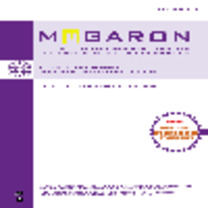Sedad Hakkı Eldem’in Mimarlığında “Uzlaşım” (Conventionalization) Olarak Tip Kavramı
The Notion of Type as “Conventionalization” in Sedad Hakkı Eldem’s Architecture
___
- Akcan, E. (2005). Modernity in translation: Early twentieth century German-Turkish exchanges in land settlement and residential culture. Doktora tezi. Kolombiya Üniversitesi.
- Anderson, S. (1991). The Legacy of German Neoclassicism and Biedermeier. Assemblage, 15, 62-87.
- Anderson, S. (1992). The Deutcher Werkbund-the 1914 debate: Herman Muthesius and Henry van de Velde. In B. Farmer, and H. Louw (Eds.), Companion to contemporary architectural thought. London: Routledge.
- Bozdoğan, S. (1987). Modernity in tradition. In S. Bozdoğan, S. Özkan, and E. Yenal (Eds.), Sedad Eldem: Architect in Turkey. Concept Media.
- Bozdoğan, S. (1987). The Turkish house reappraised. In S. Bozdoğan, S. Özkan, E. Yenal (Eds.), Sedad Eldem: Architect in Turkey. Concept Media.
- Bozdoğan, S. (2001). Modernism and nation building: Turkish architectural culture in the early Republic. Washington University Press.
- Colquhoun, A. (2002). Modern architecture. Oxford, New York: Oxford University Press.
- Eldem, E. (2008). Sedad Hakkı Eldem olunmaz, doğulur (mu)? Bir aile ve gençlik hikayesi. E. Eldem, B. Tanju ve U. Tanyeli (Eds.),
- Sedad Hakkı Eldem 1: Gençlik yılları. İstanbul: Osmanlı Bankası Arşiv ve Araştırma Merkezi. Eldem, S. H. (1955). Türk evi plan tipleri. Istanbul: ITU Mimarlık Fakültesi Atölyesi.
- Eldem, S. H. (1973). Elli yıllık Cumhuriyet mimarlığı. Mimarlık, 11-12, 5-11.
- Eldem, S. H. (2007). Milli mimari meselesi. In B. Tanju (Ed.), Tereddüt ve tekerrür: Mimarlık ve kent üzerine metinler 1873- 1960. İstanbul: Akın Nalça Yayınları.
- Eldem, S. H. (2007). Yerli mimariye doğru. In B. Tanju (Ed.), Tereddüt ve tekerrür: Mimarlık ve kent üzerine metinler 1873- 1960. İstanbul: Akın Nalça Yayınları.
- Eldem, S. H. (2008). Hayat ve mimarlık üstüne, Sedad Hakkı’nın gençlik yazıları 1926-1930: II. Ankara’nın yenilenmesi ve mimaride yerlilerin rolü, Ankara, 1926. E. Eldem, B. Tanju ve U.
- Tanyeli (Eds.), Sedad Hakkı Eldem 1: Gençlik yılları. İstanbul: Osmanlı Bankası Arşiv ve Araştırma Merkezi.
- Eldem, S. H. (2008). Hayat ve mimarlık üstüne, Sedad Hakkı’nın gençlik yazıları 1926-1930: V. Avrupa’da ikmal-i tahsil ziyareti,
- Font-Romeu, 1928. E. Eldem, B. Tanju ve U. Tanyeli (Eds.), Sedad Hakkı Eldem 1: Gençlik yılları. İstanbul: Osmanlı Bankası Arşiv ve Araştırma Merkezi.
- Eldem, S. H. (2008). Hayat ve mimarlık üstüne, Sedad Hakkı’nın gençlik yazıları 1926-1930: VI. Avrupa’da ikmal-i tahsil ziyareti, Guethary, 1928. E. Eldem, B. Tanju ve U. Tanyeli (Eds.), Sedad Hakkı Eldem 1: Gençlik yılları. İstanbul: Osmanlı Bankası Arşiv ve Araştırma Merkezi.
- Eldem, S. H. (2008). Hayat ve mimarlık üstüne, Sedad Hakkı’nın gençlik yazıları 1926-1930: XVI. Avrupa’da ikmal-i tahsil ziyareti, Paris, 1929. E. Eldem, B. Tanju ve U. Tanyeli (Eds.), Sedad Hakkı Eldem 1: Gençlik yılları. İstanbul: Osmanlı Bankası Arşiv ve Araştırma Merkezi.
- Eldem, S. H. (2008). Hayat ve mimarlık üstüne, Sedad Hakkı’nın gençlik yazıları 1926-1930: XXXVII Avrupa’da ikmal-i tahsil seyahati, Berlin, 1929. E. Eldem, B. Tanju ve U. Tanyeli (Eds.), Sedad Hakkı Eldem 1: Gençlik yılları. İstanbul: Osmanlı Bankası Arşiv ve Araştırma Merkezi.
- Hays, K. M. (1989). Tessenow’s architecture as national allegory: Critique of capitalism or protofascism? Assemblage, 8, 104- 123.
- Horkheimer, M. & Adorno, T. W. (1990). The concept of Enlightenment. In J. Cumming (Trans.), Dialectic of Enlightenment. New York: Continuum Publishing Company.
- Keyder, Ç. (1997). Whither the project of modernity? Turkey in the 1990s. In S. Bozdoğan, and R. Kasaba (Eds.), Rethinking modernity and national identity in Turkey (pp. 37-51). London: Washington University Press.
- Kruft, H. W. (1994). Germany and its neighbours: 1890s-1945. In R. Taylor, and E. Callander, & A. Wood (Trans.), A history of architectural theory from Vitruvius to the present. New York: Princeton Architectural Press.
- Muthesius, H. (1994). Style-architecture and building-art: Transformations of architecture in the nineteenth century and its present condition (H. F. Mallgrave, Ed.). Santa Monica: The Getty Center for the History of Art and Humanities.
- Muthesius, H. (1970). Aims of the Werkbund. In U. Conrads(Ed.), On 20th-century architecture. London: Lund Humphries.
- Muthesius, H. ve Van de Velde, H. (1970). Werkbund thesis and antitheses. U. Conrads (Ed.), On 20th-century architecture. London: Lund Humphries.
- Nalbantoğlu, G. B. (1989). The professionalization of the Ottoman-Turkish architect. Doktora tezi. Kalifornia Üniversitesi.
- Schwartz, F. J. (1996). The Werkbund: Design theory and mass culture before the First World War. New Haven and London: Yale University Press.
- Tanju, B. (2008). Sedad Hakkı’nın mimarlık metinleri: Değişim, yanılgı, soru(n)lar ve vatan (1928-1930). E. Eldem, B. Tanju ve U. Tanyeli (Eds.), Sedad Hakkı Eldem 1: Gençlik yılları. İstanbul: Osmanlı Bankası Arşiv ve Araştırma Merkezi.
- Tanyeli, U. (2007). Sedad Hakkı Eldem (1908-1988). Mimarlığın aktörleri: Türkiye 1900-2000 (pp. 162-180). İstanbul: Garanti Galeri.
- Tanyeli, U. (2008). Genç Sedad Hakkı Eldem: Kültürlerarası bir kimlik inşası 1908-1930. E. Eldem, B. Tanju ve U. Tanyeli (Eds.), Sedad Hakkı Eldem 1: Gençlik yılları (pp. 42-131). İstanbul: Osmanlı Bankası Arşiv ve Araştırma Merkezi.
- ISSN: 1305-5798
- Yayın Aralığı: 4
- Başlangıç: 2006
- Yayıncı: Kare Yayıncılık
Bağdat Caddesi ve Çevresinde 1965-1973 Yılları Arasında İnşa Edilmiş Apartmanların Cephe Özellikleri
Erken Cumhuriyet Dönemi İlköğretim Yapılarına Bir Örnek: Bursa İstiklal İlkokulu
Burcu Selcen COŞKUN, Aybike SAYIN
Zeynep GÜL ÜNAL, Banu GÖKMEN ERDOĞAN
Sibel MANSUROĞLU, VEYSEL DAĞ, AYŞE KALAYCI ÖNAÇ, Zerrin SÖĞÜT
1960-1980 Yılları Arasının Üretken Figürlerinden Melih Koray’ın Apartman Tasarımlarındaki Cephe Dili
